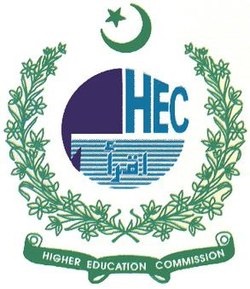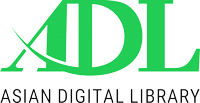Evolution of Islamic Calligraphy as an Extension of Art and Design in Pakistan
DOI:
https://doi.org/10.53762/alqamar.05.01.e04Keywords:
Traditional Calligraphy, Modern Calligraphy, Art and Design, Pakistani Art, SymbolismAbstract
Art represents the creative dimension of a society and design is the sense of formal organization that focuses functionality. In a society, art and design plays significant role being representative of its norms, culture, believes, traditions, and socio-political setting. These are the two progressive domains that allows freedom of expression which serve as the foundation of Islamic calligraphy in Pakistan. Although they have been questioned at different time periods but they kept on evolving besides external or internal constraints. Calligraphy is an art of beautiful writing that swiftly influences the sensations of a spectator. It is one such expression which has been celebrated immensely as an extension of art and design in the Islamic tradition that provides it prospering conditions for artistic evolution. In Pakistan, two of its school of thoughts exists: traditional calligraphy and modern calligraphy. In art, modern calligraphy is practiced with liberal approach. Some artists focused on its didactic gesture whereas some explored creative execution of the text beyond conventional means and the rest utilized it according to the consumerist approach. In communication design, calligraphy as typography plays essential role. It is used for purpose-based communication by dragging the attention of spectators towards a certain message. By means of artistic execution, manipulation of calligraphic text has taken the form of an art movement that appreciates its inclination towards the Islamic identity of the country. In Pakistan, practice of this genre is conceived as an integral part of the religious faith that ensures Divine blessings. As an art form, besides artists, designers have also contributed in finding innovative vistas for the creative execution of calligraphy. Both have used calligraphy as a tool of creative expression coupled with religious symbolism. Artistic manipulation of calligraphy has left strong influence on the development of text-based contemporary art of Pakistan as well.
References
Department of Islamic Art, “Calligraphy in Islamic Art,” In Heilbrunn Timeline of Art History, New York: The Metropolitan Museum of Art, 2000-, accessed January 28, 2022, http://www.metmuseum.org/toah/hd/cali/hd_cali.htm.
Towards Understanding the Quran, “Surah al-‘Alaq 96: 1-19,”accessed January 28, 2022. https://www.islamicstudies.info/tafheem.php?sura=96.
Herbert Read, A Concise History of Modern Painting (Reprinted in London: Thames and Hudson, 1986), 252.
Farah Khan, “Pioneers of Modern Calligraphy in the Art Scene of Pakistan,” Ancient Punjab 6 (2018): 12.
Iftikhar Dadi, “Ibrahim El Salahi and Calligraphic Modernism in a Comparative Perspective,” South Atlantic Quarterly, (2010): 559; Stephen Ross, and Allana C. Lindgren, The Modernist World (New York: Routledge, 2017), 148.
Dadi, 559.
Hilmann Von Halem. ed., Calligraphy in Modern Art (Karachi: Pakistan-German Forum, 1975), 41-42.
Tariq Masud, Muraqqa‘-i Khaṭṭ: An Album of Calligraphy (Lahore: Lahore Museum, 1981), 31.
S. Amjad Ali, Painters of Pakistan (Islamabad: National Book Foundation, 1995), 279.
Khalid Said Butt. Pub. Paintings from Pakistan (Islamabad: Idara Saqafat-e-Pakistan, 1988), 64.
Stephen Ross, and Allana C. Lindgren, The Modernist World (New York: Routledge, 2017), 148.
Salima Hashmi, Hanging Fire: Contemporary Art from Pakistan (New York: Asia Society, 2009), 47.
Dadi, 559.
S. Amjad Ali. Painters of Pakistan (Islamabad: National Book Foundation, 1995), 281.
Quddus Mirza, interview by the author at National College of Arts Lahore on March 8, 2012.
Khalid Saeed Butt. ed., Paintings from Pakistan (Islamabad: Idara Saqafat-e-Pakistan, 1988), 58.
Safia Faruq, interview by the author at College of Art & Design, University of the Punjab on April 18, 2012.
Faruq, 2012.
Waseem Ahmed, interview by the author at Lahore College for Women University on July 12, 2012.
Nikhat Ekbal, Great Muslims of Undivided India (Delhi: Kalpaz Publications, 2009), 11-12.
Farah Khan, “Vistas of Calligraphic Paintings in Lahore (2001-2011)” (MS Thesis, Lahore College for Women University, 2012), 59.
Akbar Naqvi, Image and Identity: Fifty Years of Painting and Sculpture in Pakistan (Karachi: Oxford University Press, 1998), 361.
Naqvi, 458-459.
Naqvi, 513.
Nadeem Zuberi, Art Facts: Exquisite Rhythm and Harmony, December 5, 2017, retrieved from https://fp.brecorder.com/2015/12/201512051252994/.
Ahmed Khan, interview by the author at Ejaz Art Gallery, Lahore on August 24, 2012.
Farah Khan, “Vistas of Calligraphic Paintings in Lahore (2001-2011)” (MS Thesis, Lahore College for Women University, 2012), 61.
Khan, 2012.
Arif Khan, interview by the author at his studio in Lahore on January 24, 2012.
Farah Khan, “From Calligraphy to Mystic Letters: The Expressive Artistic Journey of Arif Khan,” Journal of Research and Reviews in Social Sciences Pakistan 4, No. 1 (2021): 1183.
SR Lim, “Walking on the Moon with artist Amin Gulgee- An Escape in Sulpture”, June 6, 2015, retrieved on January 27, 2022, https://www.gulgeeamin.com/2015/06/06/walking-on-the-moon-with-artist-amin-gulgee-an-escape-in-sculpture/.
T. U. Dawood, “The Power of 7,” April 2018, retrieved from https://www.thenews.com.pk/magazine/you/305239-the-power-of-7.
Salima Hashmi, The Eye Still Seeks: Pakistani Contemporary Art (India: Penguin Books, 2015), 140.
Grosvenor Gallery, Mohammad Ali Talpur, retrieved on January 14, 2022, https://www.grosvenorgallery.com/artists/120-mohammad-ali-talpur/overview/.
Sothebys, “This too Shall Pass,” retrieved from https://www.sothebys.com/en/buy/auction/2020/this-too-shall-pass/muzzumil-ruheel-ticking-moment.
Grosvenor Gallery, “Ghulam Muhammad-Peeha (Grind)” retrieved from https://www.grosvenorgallery.com/exhibitions/59-ghulam-mohammad-peeha-grind-in-association-with-canvas-gallery-karachi/press_release_text/.
Published
How to Cite
Issue
Section
Copyright (c) 2022 Al-Qamar

This work is licensed under a Creative Commons Attribution 4.0 International License.


















